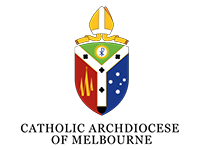What are bishops responsible for?
Bishops have three main responsibilities:
- To Teach. A bishop is the principal teacher in his diocese and has a responsibility to preach the Word of God to his people. He must ensure that those delegated to teach in his name, namely priests, teachers, catechists and others, teach the truth.
- To Govern. This refers to meeting the needs of the local community (material, social, personal and spiritual) as well as ensuring that church laws are observed. He is ultimately responsible for training and supplying priests for parishes, for the finances of the diocese and for all church property. A bishop has the power to make church laws, be a judge in church matters and to enforce observance of these laws. These laws generally relate to worship, preaching, administration of the sacraments, safeguarding the faith and morals of the faithful and religious instruction.
- To Sanctify. A bishop is responsible for ensuring that the sacraments are administered and has the special authority to ordain priests and to confirm. It is usually the case, then, for a bishop to ordain the priests who are to serve in his diocese and to travel around the diocese and administer the Sacrament of Confirmation. He must also ensure that mass is celebrated in the diocese every Sunday and on major feast days.
Other obligations of a bishop
- Must live in the diocese for most of the year, unless on official business in Rome or when attending a Church Council.
- Has a serious duty to be present at his cathedral during the seasons of Lent and Advent, and on the feasts of Easter, Pentecost, Christmas and Corpus Christi.
- Every five years a bishop must send a report to Rome.
- Bishops must visit Rome to meet with the Pope at least once every 5 years and visit the tombs of the Apostles Peter and Paul.
- Bishops must regularly visit each part of their diocese.
- Bishops must attend Synods (meetings of Bishops) when they are called.
The administration of a diocese
- The Archbishop is assisted by a Vicar General. The Vicar General is the bishop’s delegate to organise and administer the diocese. This includes finances, property and archives, etc.
- The Vicar General represents the bishop when he is not available and has the power to govern in his absence.
- Melbourne is a large Archdiocese. The Archbishop has the assistance of a number of auxiliary bishops. They share in the pastoral care of the Archdiocese with the Archbishop and have special responsibilities.
- Auxiliary bishop, Bishop Terence Curtin is Episcopal Vicar for the Northern Region. He is also Episcopal Vicar for Evangelisation and Mission.
- Very Rev. Brendan Hayes is the Episcopal Vicar for the Southern Region.
- Monsignor Anthony Ireland is Episcopal Vicar for the Eastern Region. He is also Episcopal Vicar for Health, Aged and Disability Care.
- The main church of the diocese is called the Cathedral.
What symbols are associated with the bishop?
- Crosier: The shepherd’s staff used on ceremonial occasions. It symbolises being the shepherd of the people in the diocese.
- Mitre: The triangular headgear, also worn by the Pope. There are three kinds depending on the liturgical season, and it is removed whenever the bishop is about to pray.
- Pectoral Cross: The large ornamental cross worn as a necklace.
- Ring: A ring worn on the third finger of the right hand. Some people still kiss the bishop’s hand as a sign of their love for him and the recognition that he is a living icon of Christ in the midst of the church.
- Zucchetto (Skull Cap): Bishops wear a purple zucchetto while cardinals wear red and the Pope wears white.
- Coat of Arms: A bishop chooses symbols appropriate to himself and his diocese. The arms of the diocese may occupy the left side whilst his personal arms occupy the right.
- Motto: In order to motivate the faithful and to set himself a specific direction, a new bishop will select a set of meaningful words, often written in Latin on the bottom of the Coat of Arms.
